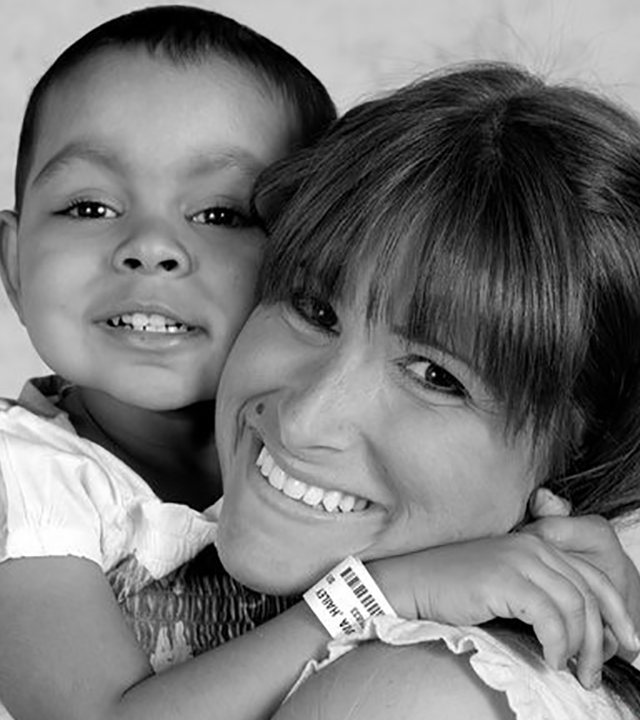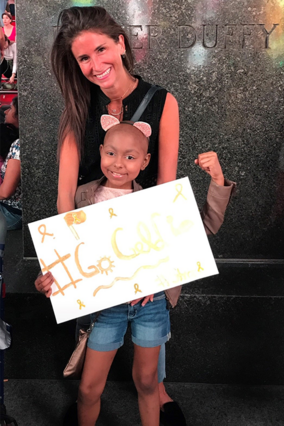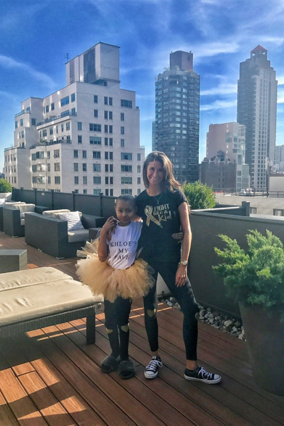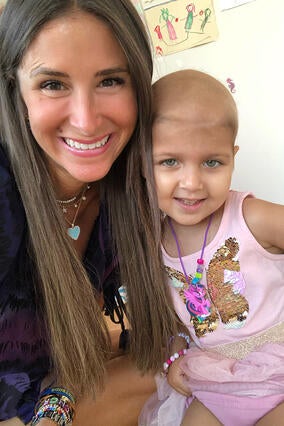
Building Hope for Families When They Need it Most
“It was something I always knew I wanted to do without knowing what it was,” said Jackie Markowitz, CLS. It was a high school work study program on the Hem/Onc (Hematology/Oncology) floor at Mount Sinai that introduced her to the field of Child Life-- forever shaping the trajectory of her career.
With her heart set on the field, she immediately went south to pursue the degree. After graduation she briefly worked on the surgical suite and pediatric cardiac ICU at Morgan Stanley when she realized something was missing.
It was HemOnc. “I still felt drawn to it,” she said. “That was always where my passion lied.”
After switching hospitals, she quickly realized that she wanted to do more for these kids. So she went on to pursue a masters in social work, mental health and bereavement counseling, and a certification in child and adolescent grief counselling.

But nothing could truly prepare her for the families she would meet both in her roles in various hospitals as well as private practice.
“There’s something to be said about the strength that a cancer family possesses, not necessarily because they inherently have that strength, but because it’s something they have to have,” said Jackie. “They do what they have to do in the moment, and they cry in their pillow at night.”
It was just a day after Hailey was diagnosed that Jackie was introduced as a part of her care team. Jackie recalls, her doctor pulling her aside to say, “’I know this is going to sound crazy, but we have this new admit and I feel like something about you guys is going to just click.’”
Walking into her room for the first time, Jackie was greeted by a singing, 2-year-old. Hailey was holding on to her IV pole and “absolutely shaking it.” From that moment, an inseparable bond was formed between the two of them. “We didn’t know it at the time, but meeting her like that was just so intrinsically Hailey in and of itself,” said Jackie.

Jackie quickly noticed how her family was handling her diagnosis in different ways: her mother was thinking practically and systematically, while her father was completely overwhelmed with emotion. Her parents and her older brother started to put Hailey’s health ahead of their own mental well-being.
“When your mind is consumed with radiation, surgeries, and other therapies the mental health understandably falls lower,” said Jackie. Thankfully she knew just what would lift her family up.
“Make-A-Wish has always been a great family unifier for the kids I have worked with,” said Jackie.
So as soon as Hailey was of age to qualify, she was referred for a wish. A “Disney kid through and through,” she chose to go to the most magical place on earth, Walt Disney World Resort. Jackie wouldn’t miss the opportunity to see them off to their car on the morning of her trip.
“It’s such a bright spot for kids, but especially for the family as a whole,” she said. “During treatment there’s so much emphasis on the child, but less on how the illness affects the family. But with a wish, the entire family is able to participate, to have this together, and to create these happy memories,” she said.

But Jackie is all too familiar with how illness can affect children differently depending on their age of diagnosis. “When they are young, it’s all they know. But for teens who are diagnosed after being healthy their entire life, in high school which is already hard, there is a whole other level of things that go into it,” she said. “It’s like dealing with an entirely different diagnosis.”
During rounds, Jackie and her team would often discuss when, during a treatment course, it would be the best time to call upon the wish granters, not only for her young patients, but for her teens as well.
For 15-year-old Erica, she frequently dealt with feelings of loneliness on the pediatric floor of her hospital. Too old for the playrooms, she would often turn to hanging out in Jackie’s office to watch their favorite show.
Practically the moment she was informed of her diagnosis; she knew what she wanted for her wish, to meet their favorite cast member. And in true Make-A-Wish fashion, they pulled out all the stops.
“That’s the thing about Make-A-Wish,” said Jackie. “Even when it’s not easy, even when its last minute, even when a million things change, they make it possible. What a difference it makes when Make-A-Wish is able to make something special happen for a family.”
And among her patients, Jackie has seen proof that a wish isn’t just a single moment in time – it’s an experience that stays with them and brings people together.
“There are so many families I know and have worked with that still talk about Make-A-Wish even after treatment ends,” she continued. And for the kids, it’s a great way to connect and bond over their shared experience of hope. “It’s something great for them to look forward to and be excited about all together.”
This Childhood Cancer Awareness Month, Jackie wants to draw attention to just how powerful hope can be for the mental health of a kid and family coping with childhood cancer. “There’s more of an openness and a comfort in talking about that nowadays,“ she says. But with a ways to go, she seeks to spread this sentiment even further, as it is so directly correlated with her work as a medical professional.